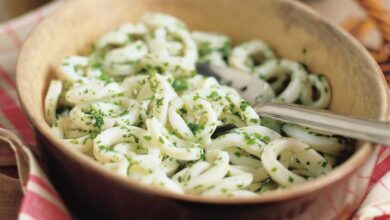How to Propagate Fishtail Palm
Welcome, fellow plant enthusiasts, to the world of Fishtail Palm propagation! If you’ve ever wondered how to expand your Fishtail Palm family or share the beauty of this exquisite plant with friends and family, you’ve come to the right place. In this guide, I will share my extensive knowledge and experience on how to propagate Fishtail Palms effectively.How to Propagate Fishtail Palm
Fishtail Palm Propagation Basics
Before diving into the nitty-gritty details of each propagation method, let’s get a quick overview of the different methods available, their time frames, difficulty levels, and the materials you’ll need. This information will help you choose the best method for your needs:
Propagation Method Time for Propagation Working Time Total Time Difficulty Level Materials Required
Seeds 2-6 months 30 minutes Varies Moderate Fishtail Palm seeds, potting mix, containers, plastic wrap, and a heat source.
Offsets 2-4 months 30 minutes Varies Easy Mature Fishtail Palm plant, sharp knife or pruning shears, potting mix, containers, and rooting hormone (optional).
Division 2-4 months 30 minutes Varies Moderate Mature Fishtail Palm plant, sharp knife or pruning shears, potting mix, and containers.
Pups 2-4 months 30 minutes Varies Easy Mature Fishtail Palm plant, sharp knife or pruning shears, potting mix, and containers.
Now that we have a basic understanding of the propagation methods available let’s delve into each method in more detail, providing step-by-step instructions and highlighting the pros and cons of each.
Propagation Methods
1. Propagating Fishtail Palm from Seeds
Method Overview: Propagating Fishtail Palms from seeds is a rewarding but time-consuming process. It allows you to grow multiple plants from scratch.
Step-by-Step Instructions:
Seed Collection: Collect ripe Fishtail Palm seeds. These are typically dark brown or black and should be plump.
Seed Preparation: Soak the seeds in warm water for 24-48 hours to soften the hard seed coat.
Potting Mix: Fill a container with well-draining potting mix.
Sowing: Plant the soaked seeds about 1 inch deep in the potting mix. Cover with plastic wrap to create a mini-greenhouse effect.
Germination: Place the container in a warm, bright location, maintaining consistent moisture levels. Germination can take several weeks to a few months.
Transplant: Once seedlings have developed multiple leaves, transplant them into individual pots.
Pros:
Allows you to grow multiple plants from seeds.
A rewarding and educational experience.
Cons:
Requires patience, as germination can be slow.
It may take several years for the palm to reach maturity.
2. Propagating Fishtail Palm from Offsets
Method Overview: Offsets, also known as suckers, are small shoots that grow at the base of mature Fishtail Palm plants. This method is relatively easy and can yield new plants quickly.
Step-by-Step Instructions:
Identify Offsets: Identify and locate healthy offsets at the base of the mature plant.
Separation: Using a sharp knife or pruning shears, carefully separate the offset from the parent plant. Ensure that it has its roots.
Potting: Plant the offset in a pot with well-draining potting mix.
Watering: Water the newly potted offset thoroughly and keep it consistently moist.
Pros:
Quick and easy method.
High success rate.
Cons:
Limited to the number of offsets your mature plant produces.
Offsets may take some time to mature into a full-sized plant.
3. Propagating Fishtail Palm through Division
Method Overview: Division is a method where you separate a mature Fishtail Palm plant into two or more smaller plants, each with its own root system.
Step-by-Step Instructions:
Plant Health Check: Ensure that the parent plant is healthy and has multiple stems.
Division: Carefully remove the plant from its pot and separate it into smaller sections, ensuring that each section has a portion of the root system.
Potting: Plant the divided sections in individual pots filled with well-draining potting mix.
Watering: Water the newly potted divisions thoroughly and maintain consistent moisture.
Pros:
Allows you to multiply your plants from a single mature specimen.
Works well for older, larger plants.
Cons:
Requires careful handling to avoid damage.
Recovery time for the divided sections can vary.


